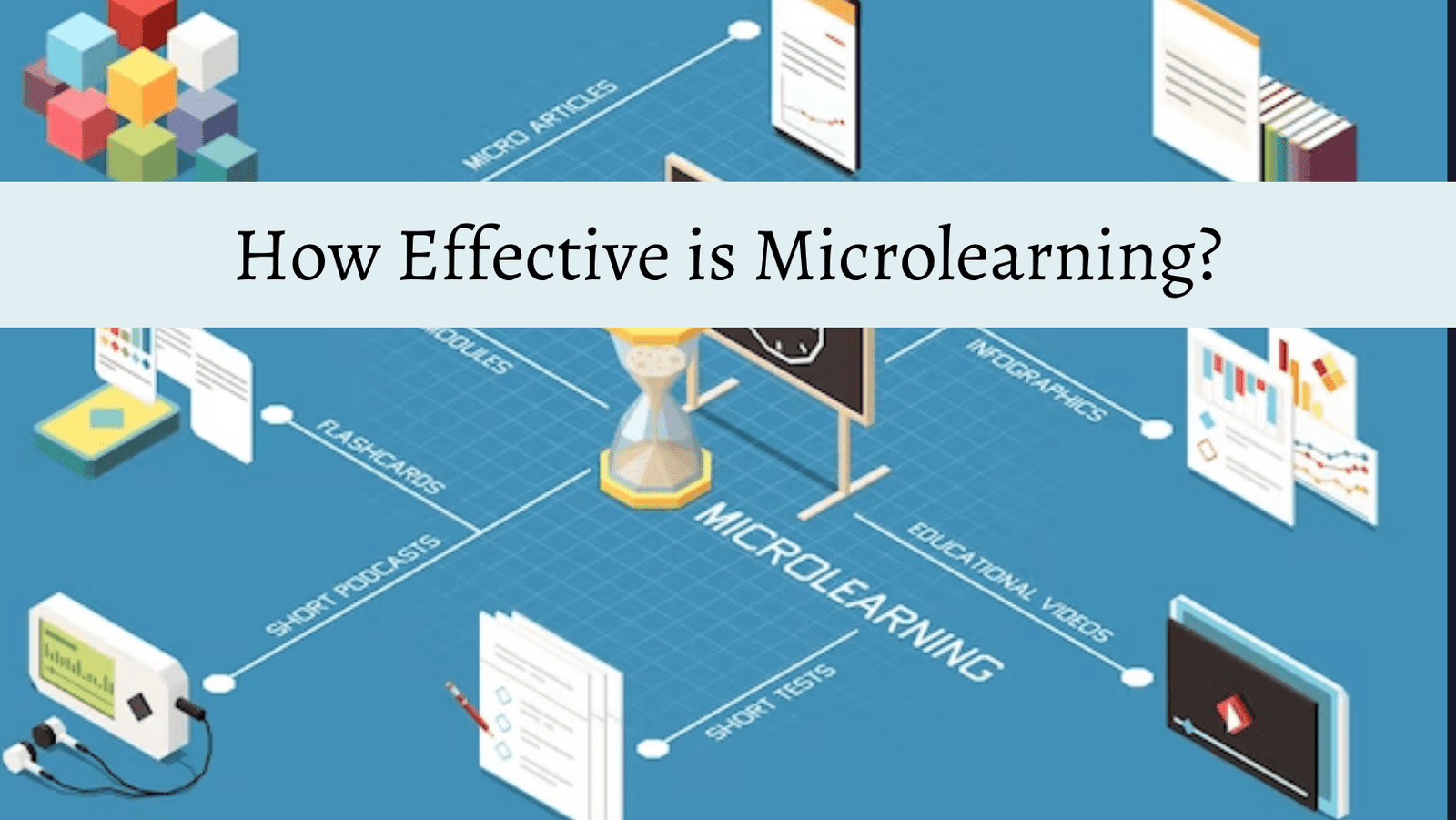A Gamе Changеr in Education : Micro Learning Effective or Just Hypе?
Recent years have seen a significant increase in interest in the concept of microlearning within the constantly changing fields of professional and educational development. Delivering content in short, focused units—often in the form of small lessons, videos, or quizzes—is known as microlearning. However, is microlearning genuinely effective, or is it only an occasional trend in the training and education industry?
This blog post will discuss the efficacy of microlearning and whether it can be regarded as a game-changer.
What is Microlеarning?
Let’s first define microlearning before delving into its efficacy. The process of breaking down difficult subjects or lessons into manageable, comprehensible portions is known as microlearning. These modules can be provided using a variety of media, such as text, video, infographics, or interactive quizzes.
They are usually brief, lasting anywhere from a few seconds to a few minutes. The idea is to give learners easily consumable information, frequently at just the right moment.
Key characteristics of microlearning include:
1. Availability and adaptability
The accessibility and flexibility of microlearning is one of its main benefits. With the ability to access brief, focused lessons on their computers, tablets, or smartphones, learners may easily fit learning into their schedules. This accessibility is especially useful in the fast-paced, technologically advanced world of today.
2. Better Absorption
Research has indicated that reducing material into more manageable and smaller pieces helps enhance memory. When information is presented in small portions, learners are more likely to retain and apply it. This principle is used by microlearning to improve long-term memory retention.
3. Time Effectiveness
Long, traditional training sessions can take a lot of time. Organizations may provide training more effectively by using microlearning, since learners can finish modules quickly. This is particularly advantageous in work environments when time is at its most important.
4. Intended Learning
Microlearning helps businesses to give learners extremely targeted and specialized content. This is especially helpful for filling in skill gaps or giving information at the right moment to satisfy pressing needs.
The Challenges and Restrictions of Microlearning
Although microlearning has many benefits, it also has drawbacks and restrictions. Let’s get to know about some of the drawbacks and challenges of it:
1. Understanding Depth
Because of its brief nature, microlearning might not be appropriate for complex or in-depth subjects. Although it works well for introducing key concepts, it might not provide readers a thorough comprehension of a subject.
2. Possibility of Artificial Learning
Because microlearning courses are brief, there’s a chance that students will simply pick up surface-level information instead of going deeper into topics. This could be a drawback when a thorough understanding is required.
3. Not Suitablе for All Topics
Some subjеcts may not bе wеll-suited for microlearning. Complеx, tеchnical, or highly specialized topics may rеquirе morе extensive training mеthods to ensure adequate understanding.
Is Microlеarning a Gamе Changеr?
The learners, the circumstances, and the learning objectives all have a major role in how effective microlearning is. In certain situations, such as enhancing response, delivering prompt and targeted information, and managing hectic schedules, it can be a game-changer.
However, it should only be used rarely because it is not a generic solution. When used as a companion to conventional learning techniques, microlearning can be quite effective. It is an effective technique for providing brief data, reinforcement, and just-in-time learning.
It needs to be thoughtfully included into larger educational and development programs in order to be a game changer.
In conclusion,
A useful addition to the training and educational environment is microlearning. While its efficacy is evident in certain situations, it shouldn’t completely replace conventional learning. Rather, it needs to be viewed as an adaptable tool that enhances the educational experience and provides students with the adaptability and ease they require in the rapidly changing modern world.
All things taken into account, microlearning is a flexible and successful method of instruction and training that can be adjusted to meet the demands of contemporary companies and learners. It is a useful tool for addressing certain learning objectives and enhancing knowledge and skills in a variety of contexts due to its emphasis on clear, targeted, and accessible content.
How it is implemented and incorporated into organizations’ and institutions’ larger education and training strategies ultimately determines whether it is a game changer or not.
Since its establishment in 2006, Mangalayatan University has set high standards in education through diverse programs, Such as the MSC Mathematics Online. The university holds AICTE accreditation, an NAAC A+ rating, and UGC qualification. According to ASSOCHAM, Mangalayatan University ranks among the top 100 institutions in India, surpassing traditional Indian universities. It has received numerous accolades, including the “University for Excellence in Teaching and Learning” award. The institution boasts advanced infrastructure and a unique pedagogical approach, aiming to expand its influence. The Online Masters Courses program is accessible in both traditional and online formats.
REFERENCES:







